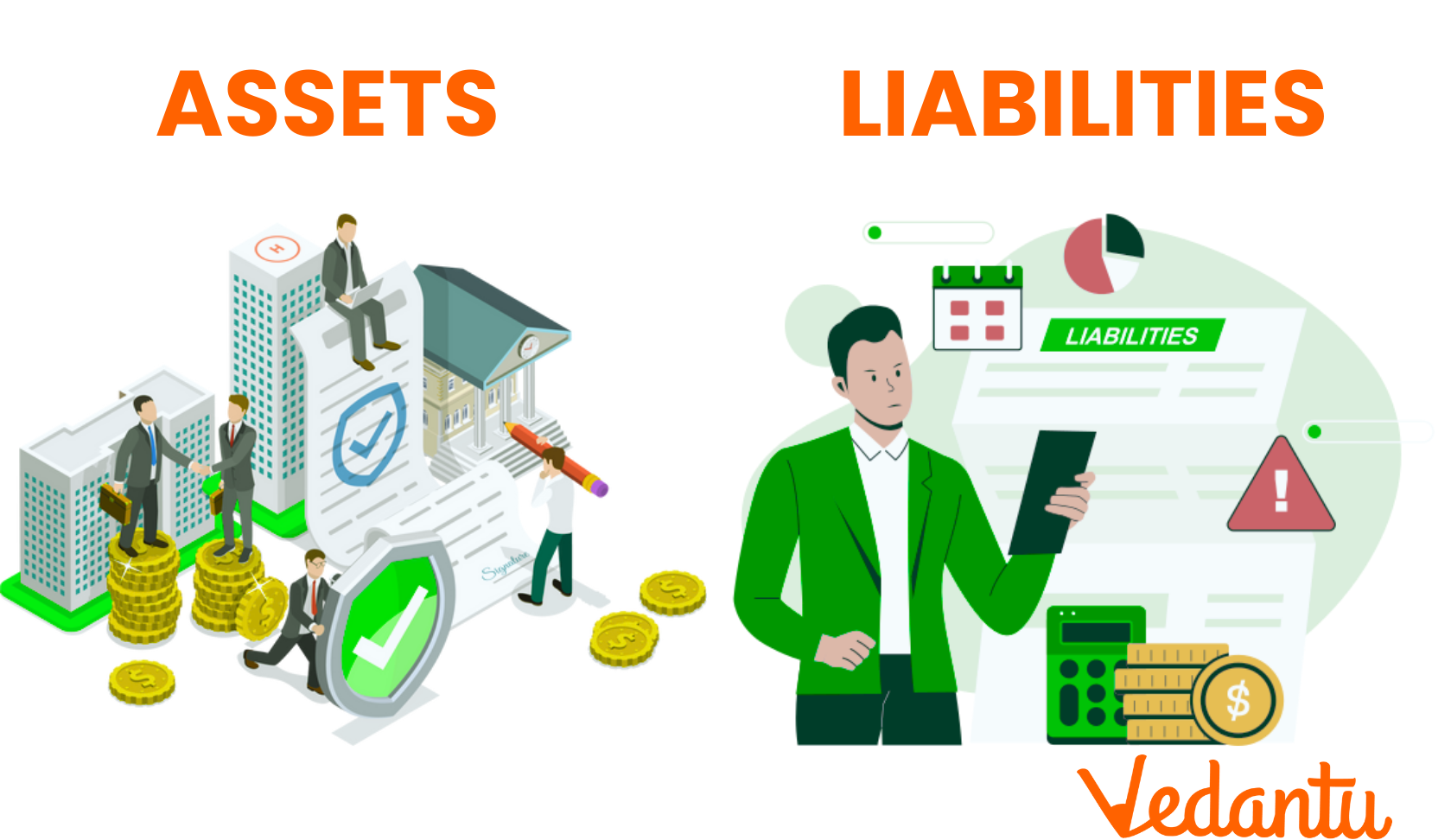




What is Assets and Liabilities With Examples
Assets and liabilities are the foundation of any financial system, whether personal, business, or national. Assets represent what you own—such as cash, property, or investments—that can provide future benefits. Liabilities, on the other hand, are obligations or debts you owe, like loans or credit card balances. Understanding the difference between assets and liabilities is essential for managing finances effectively. This guide aims to simplify these concepts, explain their types, and help you learn how they interact in shaping financial health. Whether you’re an individual planning personal finances or a business owner aiming for growth, this page offers a clear and concise explanation to help you make informed decisions.

Assets and Liabilities: An Overview
Assets and liabilities form the backbone of financial statements. Assets are what a person, business, or organisation owns and can use to generate future benefits. Liabilities, on the other hand, are what they owe to others—obligations that need to be settled. Understanding these concepts is key to managing finances effectively.
What are Assets?
Assets are resources owned or controlled by an individual or organisation that have monetary value. They are classified into the following categories:
1. Based on Convertibility
Current Assets: These can be converted into cash within a year, like cash, accounts receivable, inventory, and short-term investments.
Non-Current Assets: These are long-term assets that cannot be easily converted into cash, such as property, equipment, and patents.
2. Based on Physical Existence
Tangible Assets: Physical items like land, machinery, or vehicles that have a measurable value.
Intangible Assets: Non-physical assets like copyrights, trademarks, goodwill, and patents.
3. Based on Usage
Operating Assets: Used in daily business operations, like equipment or stock.
Non-Operating Assets: Not directly tied to operations but generate income, such as investments.
What are Liabilities?
Liabilities represent the obligations or debts that an individual or organisation owes to others. They are classified as:
1. Current Liabilities
Short-term obligations that need to be settled within a year. Examples include:
Accounts Payable
Short-term Loans
Taxes Payable
Accrued Expenses
2. Non-Current Liabilities
Long-term obligations payable over a period exceeding a year. Examples include:
Long-term Loans
Bonds Payable
Deferred Tax Liabilities
3. Contingent Liabilities
These are potential obligations that may arise based on future events, like pending lawsuits or guarantees.
Key Differences Between Assets and Liabilities
Importance of Managing Assets and Liabilities
Efficient management of assets and liabilities is essential for maintaining financial stability. Businesses and individuals must balance these to avoid excessive debt and ensure smooth operations.
Conclusion:
Assets and liabilities are fundamental elements of financial management, whether for individuals, businesses, or organisations. Assets represent what you own and can use to generate future benefits, while liabilities are what you owe and must settle. Understanding the balance between these two is essential for financial health and stability. Proper management of assets ensures growth and profitability, while responsible handling of liabilities helps minimise financial risks. By maintaining a healthy balance sheet, individuals and businesses can achieve long-term financial goals and navigate economic challenges effectively. Mastering these concepts empowers you to make informed decisions and build a secure financial future.
FAQs on Difference Between Assets and Liabilities
1. What is the difference between assets and liabilities?
The main difference between assets and liabilities is that assets represent what you own, such as cash or property, while liabilities represent what you owe, such as loans or accounts payable.
2. What is assets and liabilities?
Assets and liabilities are two key components of accounting. Assets are valuable resources owned by a person or business, while liabilities are obligations that need to be settled.
3. What is an assets and liabilities list?
An assets and liabilities list is a document or statement that outlines all the owned resources (assets) and obligations (liabilities) of an individual or organization, providing a snapshot of financial health.
4. What is assets and liabilities with examples?
Assets include items like cash, property, and equipment, while liabilities include loans, credit card debt, and accounts payable. For instance, owning a car is an asset, while the loan for the car is a liability.
5. What are the types of assets and liabilities?
Assets are classified as current, non-current, tangible, and intangible, while liabilities are divided into current, non-current, and contingent liabilities.
6. What is the verification and valuation of assets and liabilities?
Verification and valuation of assets and liabilities involve confirming the existence and accurate worth of resources and obligations in financial records. This is done during audits to ensure transparency and accuracy.
7. What is the assets and liabilities format?
The assets and liabilities format refers to their presentation in a balance sheet. Assets are listed on one side (typically the right), while liabilities are shown on the other (typically the left).
8. What is an assets and liabilities chart?
An assets and liabilities chart is a visual representation of owned resources (assets) and owed obligations (liabilities), helping to analyze financial balance and performance.
9. Why are assets and liabilities important in financial management?
Assets and liabilities help assess financial health, manage cash flow, and determine profitability. A balance between the two is crucial for long-term stability and growth.




































